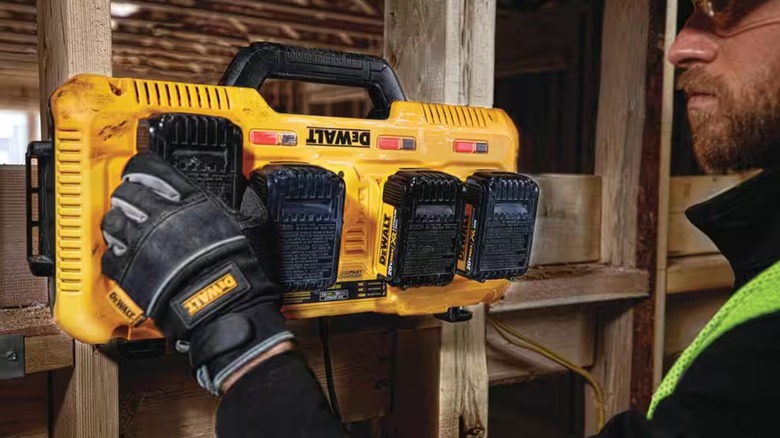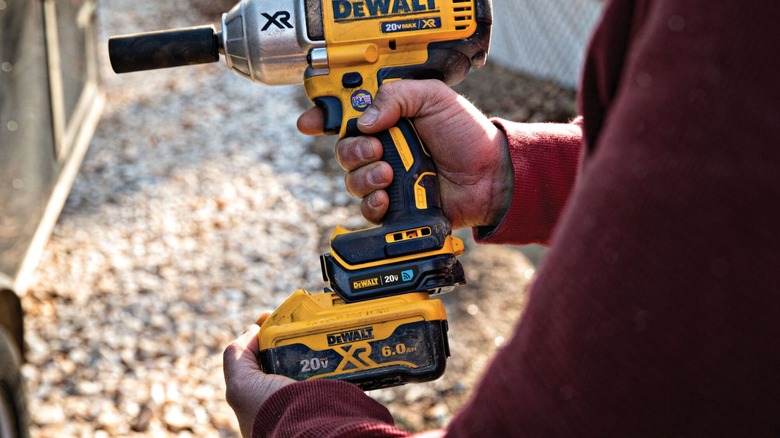
If you've ever had any kind of battery-operated toy or gadget like a TV remote, your instincts were probably to keep using it until the batteries ran dry and you had to replace them. This is fine for disposable batteries, since providing power is all they're supposed to do. However, not every device considered a "battery" delivers power in the same way. For example, the battery packs used by DeWalt power tools don't just deliver power; they optimize and regulate it.
It's because these battery packs
carefully regulate their own power delivery that it's inadvisable to let the batteries drain out completely. In fact, DeWalt specifies on its Best Practices for Battery Life FAQ, "You should stop using a battery as soon as you feel a substantial decrease in power from the tool. Completely running down a battery may damage it." What exactly is it that differentiates these battery packs from their disposable counterparts, though? It starts to make more sense if you think of them less like batteries and more like small engines, delivering power at a precise rate to keep themselves running in proper shape. If your DeWalt battery won't hold a charge anymore, it might be because it's been prematurely burnt out from running on empty.
Read more: 6 Non-DeWalt Tools That Work With DeWalt Batteries
Deep Discharge Forces The Battery To Stress Itself Generating Power

DeWalt's rechargeable battery packs aren't just made up of power cells, though that is certainly the most prominent element in their design. In addition to the power cells, however, DeWalt batteries also contain a small circuit board, which controls how the pack delivers its power payload. The circuit board determines when energy is delivered, specifically when it's plugged into a compatible DeWalt tool, and delivers its specified amperage in precise levels, whether it's 20V in America or 18V in other countries.
The problem with letting the battery run down to empty is that the circuit board can't really tell the difference between ample energy and near-empty energy. Its only job is to deliver power, but if there's only a scrap of power to deliver, the device needs to work harder to wrestle it out and supply it to a tool. In this state, the battery pack becomes similar to a car engine running with nearly an empty tank of gas. It needs to put in twice the effort just to keep up its standard level of power delivery, which puts twice as much strain on the components.
If you keep running your DeWalt batteries all the way down to zero, you're putting exponentially more stress on it than it's supposed to endure, which could cause it to burn out far sooner than you would expect it to. If your DeWalt battery is starting to run low, around 20-30%, don't try to force it all the way down to empty. Just put it on the charger and let it get its reserves back. It's certainly much safer to leave your DeWalt batteries on the charger than to run them dry.
Want the latest in tech and auto trends? Subscribe to our free newsletter for the latest headlines, expert guides, and how-to tips, one email at a time.
Read the original article on SlashGear.










